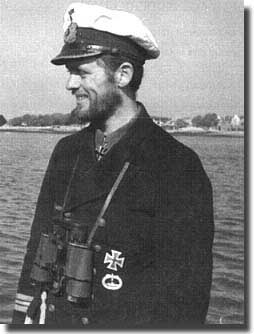Introduction.
After Japan's suprise attack on the United States at Pearl Harbor on the 7th. of December in 1941, Hitler, as he had previously promised, was bound to declare war on the United States, and he did so on the 11th. of December of that year.
Removal of any restrictions on German U-Boats.
With the German declaration of war against the US, all restrictions on German U-Boats attacking American shipping were removed. Admiral Donitz in charge of the U-Boat arm, was anxious to prepare a concentrated attack on United States shipping operating up and down the domestic American East Coast. It was necessary to allocate Type IX boats to this mission, the only ones with sufficient range that could cruise the distances involved. He earmarked 6 boats for this task, but U-128 could not sail, as she was in dire need of urgent repairs.
Those to be involved were the following boats: U-125, U-123, U-66, U-130, and U-109, they were all on their way to America between the 18th. and 27th. of December 1941, the voyage expected to take them about two weeks.

Type IX U-Boat
In position and ready to strike.
It was planned that all 5 boats would be in position by the 13th. of January in the new year of 1942. The first blood came to U-123, who was on the job early, on the 11th. of January, she struck, ironically, the first victim was the British freighter SS Cyclops, of 9,000 tons. Kals in U-130, then accounted for 2 ships over the following two days. The five boats sank at least a ship a day until Drumbeat ceased on the 6th. of February. Overall, 25 ships were accounted for, their tonnage, 156,939.
U-123, with Ktplt Hardegen in command, sank the most ships, 9 in all, they added up to 53,173 tons of shipping, a formidable total for one U-Boat.
This initial foray of German submarines into the waters of the United States along their East Coast, was followed up by further groups of U-Boats, they sank vessels in the Gulf Of Mexico, and through the Caribbean.

Kptlt Reinhard Hardgen,
the most successful U-Boat commander of the 5 boats used in Operation Drumbeat,
against shipping on the American East Coast, 11th January/ 6th. February 1942.
The Convoy System.
American authorities were rather slow to initiate a convoy system on the US east coast, not withstanding such a system had been proven to be efficient, not only for Britain and her merchant fleet as it plied the sealanes around the world in WW2, but had likewise been very useful in cutting down shipping losses over WW1.
Not only did it take some 4 months to initiate convoys up and down the US east coast, the main cities along this seaboard remained remained brilliantly lit at night, no blackouts were introduced, any ship steaming against such a background were silhouetted, and the waiting U-Boats had a real picnic as they slaughtered US shipping.
Shipping losses over the first 6 months.
During the first six months, the German U-Boats created mayhem on this coast, they sank an incredible 397 ships, to total some 2 million tons, that we could ill afford to lose. The carnage had to stop, and the introduction of a viable convoy system played its part in reducing this level of loss.
Price paid by the U-Boats.
7 U-Boats paid the ultimate price, those sunk were: U-85, U-352, U-157, U-158, U-701, U-153, and U-576. Some 302 German sailors forever asleep in the eastern coastal waters of the United States.
By mid July 1942, Donitz called it a day, and ordered the withdrawal of the last two boats, U-754, and U-458, from American waters.
The North Atlantic again became the focus of the U-Boat war. However, this diversion over but a few months of 1942, had proven most fruitful for the U-Boat commander, his submarines, and their intrepid crews.


